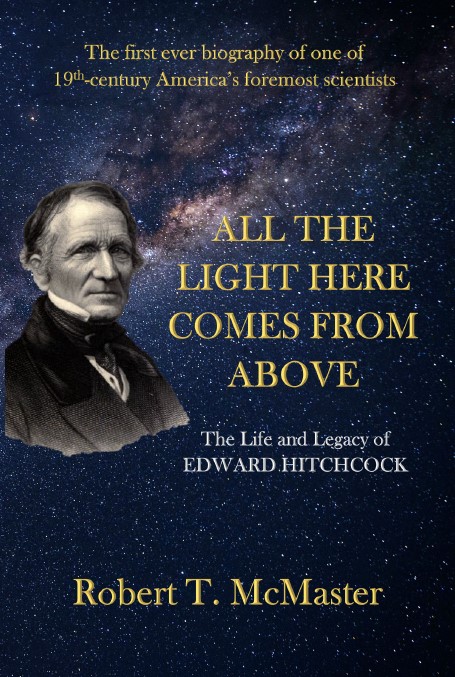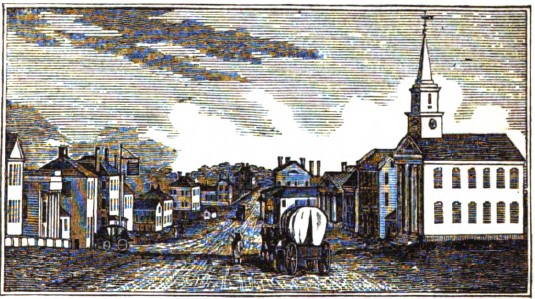
ABOUT THE AUTHOR
Robert T. McMaster grew up in Southbridge, Massachusetts, a New England mill town. He holds a B.A. from Clark University and graduate degrees from Boston College, Smith College, and the University of Massachusetts. He taught biology at Holyoke Community College in Massachusetts from 1994 to 2014. His parents' reminiscences of growing up in early 20th century America were the inspiration for his four novels, Trolley Days (2012), The Dyeing Room (2014), Noah's Raven (2017), and Darkest Before Dawn (2022). In 2021 he published a biography, All the Light Here Comes from Above: The Life and Legacy of Edward Hitchcock.
IN THE
AUTHOR'S OWN WORDS
THE DAYS OF TROLLEYS
"Of all my father's stories of his childhood, I was most fascinated by those about the trolleys that ran up and down the streets of Southbridge. In summer when the open-sided 'breezer' cars were operating, he and his friends would run along behind a moving car, jump aboard, and enjoy a free ride. It was strictly forbidden, of course, but that didn't seem to matter."
OF DEATH AND DYEING
"Memories of my own childhood have also been incorporated into my books. One experience in particular, a brief visit to the dyehouse of a still operational woolen mill in Putnam, Connecticut, in the nineteen-sixties, left an indelible impression on me that inspired the writing of The Dyeing Room nearly fifty years later."
THE FRENCH CONNECTION
"Since the late nineteenth century, Southbridge, Massachusetts, has been home to one of the largest concentrations of people of French-Canadian descent in the United States, numbering some 60% of the town's population in 1900. Fifty years later, when I was a boy, the town's Québécois heritage was still very much in evidence. French was commonly spoken in shops on Main Street; the surname Proulx far outnumbered Smith and Jones in the telephone directory; Mass was still said in French at Notre Dame Cathedral; and instruction in French was still provided at Notre Dame Elementary School and High School.
The struggle of newly-arrived French-Canadians to preserve their culture, language, and faith in the midst of the secular, pluralistic society of a New England city is an important story in our nation's history, one that has not been very widely explored in American historical fiction."
South-eastern
view of the central part of Southbridge
from Historical
Collections by John Warner Barber (1841)
FOOTPATH IN THE FOREST
"I taught biology at Holyoke Community College for nearly 20 years. Every semester I took my students on hikes in the forest adjacent to the campus along a network of mostly narrow, winding trails. But one trail was different from the rest, too wide and well-graded to be a mere footpath in the forest. A little research revealed the fascinating story of that trail — it was actually the right-of-way of an 'interurban' trolley line that ran between Holyoke and Westfield in the early 20th century. As I told my students about how that line allowed workers, shoppers, even students of that era, to commute between Westfield and Holyoke, the characters and stories in my books began coming to life in my imagination."
TRUE CONFESSIONS
"My great-aunt, Margaret Plimpton, attended Boston University for several years during the World War I era. In a letter to my grandmother, her half-sister, Margaret admitted that for a time she was a member of a student organization in Boston that was sympathetic to Germany, believing that Americans were misjudging that country's motives.
Margaret had a change of heart once the truth of Germany's motives was apparent and the atrocities committed by German soldiers in Europe were known. In a letter to her sister in January 1917 she wrote, 'I’m awfully ashamed of my former sentiments. How could I be so foolish?'
Those letters inspired an exchange between Pauline Foley and Jack Bernard in Darkest Before Dawn."
QUICK LINKS
Also by
Robert T. McMaster
Robert T. McMaster

Visit
www.EdwardHitchcock.com




